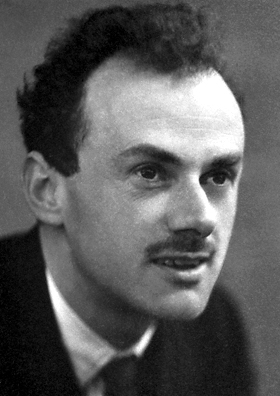On this date in 1902, Paul Dirac, the Nobel Prize-winning physicist, was born in Bristol, England. Dirac received his undergraduate degree in electrical engineering in 1921 and his master’s in mathematics in 1923, both from the University of Bristol. He went on to earn a Ph.D. from the University of Cambridge in 1926, studying quantum mechanics and the theory of general relativity. He introduced an equation in 1928 which became known as the Dirac Equation. His equation, along with many other advances, implied the existence of anti-matter. Dirac and Erwin Schrodinger won the Nobel Prize in Physics in 1933 for “the discovery of new productive forms of atomic theory.”
Dirac married Margit Wigner in 1937 and they had four children. He was known for being extremely modest — he tended to name his discoveries after others instead of himself. He chose to give all of the proceeds from his book Directions in Physics (1978) to create a lecture series at the University of New South Wales in Kensington, Australia. He was a faculty member at the University of Cambridge, where he held the Lucasian Chair of Mathematics, and at the University of Miami and Florida State University.
A memorial for Dirac was unveiled in 1995 in Westminster Abbey. The dean of Westminster, Edward Carpenter, had initially refused to allow the memorial to be created, calling Dirac “anti-Christian” but relented after five years.
Along with receiving the Nobel Prize, he won the Copley Medal and the Max Planck Medal in 1952 and was made a Fellow of the Royal Society in 1930. Many awards have been named after him, including the Paul Dirac Medal and Prize awarded by the Institute of Physics, of which Stephen Hawking was a recipient. D. 1984.

